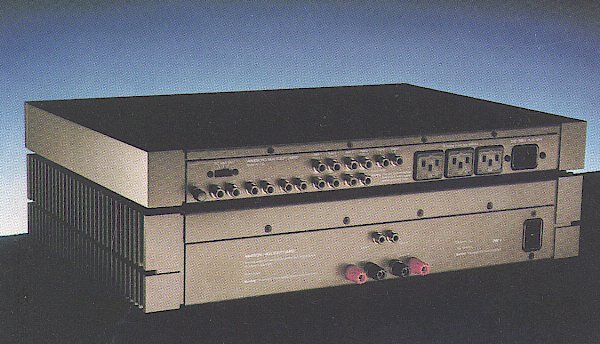

| Rated Output | 1 V rms into 600 Ohms | Max output | 10 V rms into 10 kOhms |
| Frequency Response | 20Hz - 20kHz ±0·2dB | I/P Overload margin | 40dB |
| SNR (LP) | 80 dB (mm/mc) | SNR | 92dB |
| Distortion | < 0·005% | Crosstalk | better than -60dB |
| Sensitivity | 0·25 mV (35 Ohms)MC | 2·5 mV (47k) MM | 150 mV (50k) others |
| Disc input cap | switchable 60 / 280 pF | Attenuator | -16·5dB |
| Width 440 mm | Height 54 mm | Depth 300 mm | Weight 5 kg |

| Rated Output | 200 Watts cont. 20Hz - 20kHz. Both channels driven 8 Ohm loads | ||
| Distortion | < 0·02% 20Hz - 20kHz, any level up to rated output | ||
| Frequency Response | 20Hz - 20 kHz ±0·1dB | Sensitivity | 1 V rms for rated output |
| SNR | 100dB or better | Crosstalk | <-60dB |
| Width 440 mm | Height 86 mm | Depth 300 mm | Weight 12 kg |
